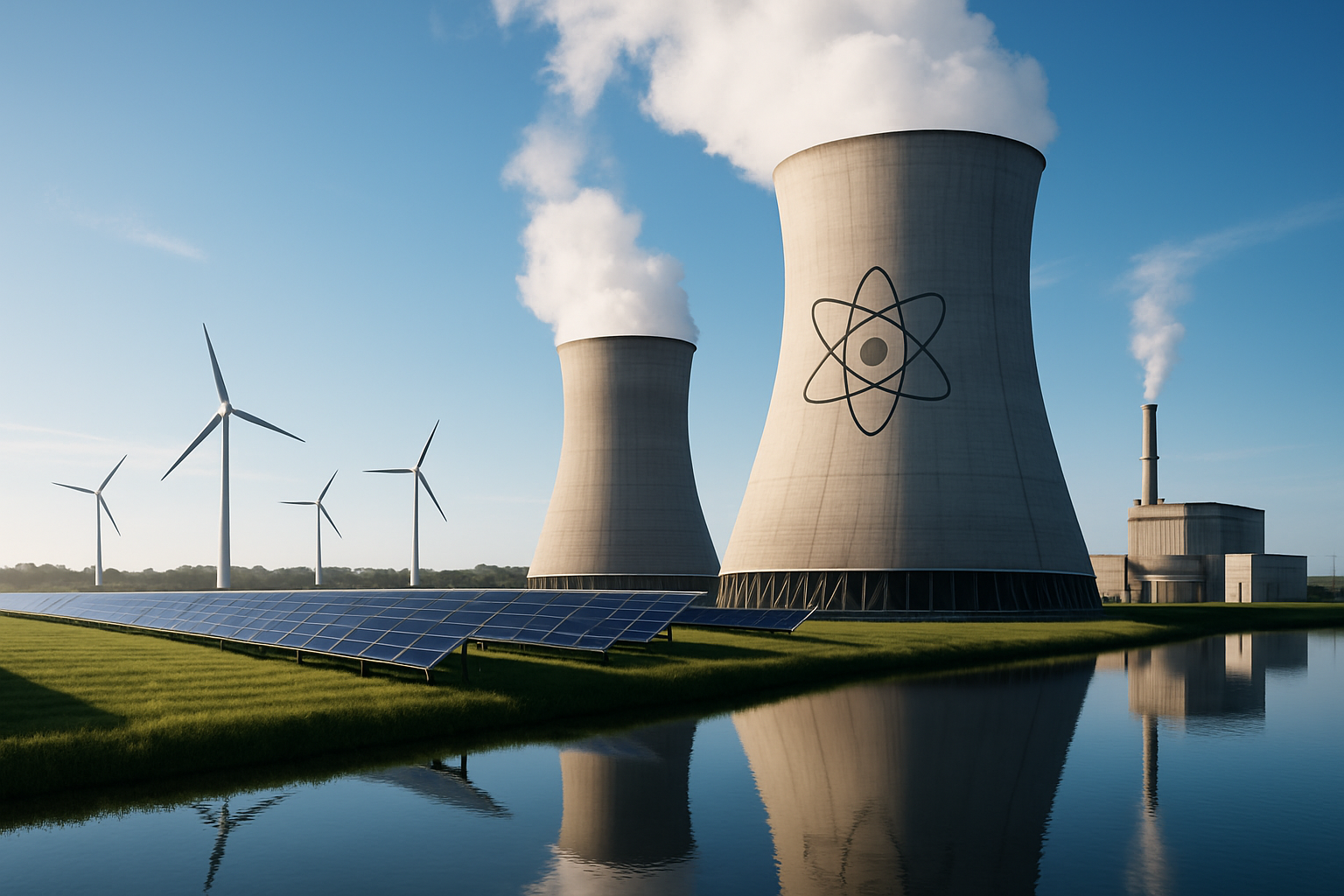
Constellation Energy Corporation stands today as one of the leading suppliers of clean energy in the United States, but its journey has been shaped by a rich legacy of nuclear power, strategic acquisitions, and an evolving vision for a carbon-free future. The company’s trajectory offers a window into the broader transformation of the American energy sector, particularly the shift from fossil fuels to renewables and advanced nuclear technologies.
Early Foundations and the Birth of a Nuclear Powerhouse
Constellation traces its roots back to the early 19th century through predecessor companies involved in gas lighting and electric utilities in Baltimore, Maryland. However, the modern identity of Constellation began to form in the late 1990s and early 2000s as the utility sector underwent major deregulation. In 1999, Baltimore Gas and Electric (BGE) separated its generation and utility businesses, creating Constellation Energy Group. The move allowed the company to focus more on electricity generation, trading, and retail supply.
In these formative years, Constellation aggressively expanded its generation portfolio, acquiring and developing power plants across the country. It placed particular emphasis on nuclear energy, at a time when concerns about carbon emissions and grid reliability were starting to reshape the energy conversation in the United States.
Nuclear Energy Leadership and Expansion
Constellation became a dominant force in nuclear generation following several key acquisitions and partnerships. The company’s nuclear assets became a backbone of its generation fleet, providing baseload electricity to millions of homes and businesses. By the late 2000s, Constellation operated one of the largest fleets of nuclear power plants in the nation, including flagship facilities such as Calvert Cliffs in Maryland and Nine Mile Point in New York.
This nuclear-centric strategy was not only a bet on reliable energy but also a hedge against the rising scrutiny of fossil fuel emissions. As regulatory and societal pressure for cleaner energy sources increased, Constellation was well-positioned to market nuclear power as a carbon-free solution at scale.
Merger and Separation: The Exelon Era
A significant turning point arrived in 2012 when Constellation Energy Group was acquired by Exelon Corporation (NASDAQ: EXC), another major utility with a large nuclear portfolio. The deal created the largest competitive energy provider in the United States, boasting an unmatched nuclear fleet. The integration brought together Constellation’s retail and wholesale power operations with Exelon’s robust generation assets, amplifying the companies’ collective influence in energy markets.
For nearly a decade, the combined entity operated under Exelon, with the Constellation brand managing the competitive energy business and customer-facing retail supply.
Constellation’s Independence and Clean Energy Mission
In 2022, Exelon executed a strategic spin-off, separating its regulated utility operations from its competitive generation business. The newly independent Constellation Energy Corporation (NASDAQ: CEG) emerged as a standalone public company, focused squarely on clean energy generation and innovation.
As of the spin-off, Constellation managed America’s largest fleet of carbon-free power plants, including over 20 nuclear reactors alongside significant wind, solar, and hydroelectric assets. The company supplies more than 10% of the nation’s carbon-free electricity, positioning itself as a linchpin in the country’s energy transition.
Investing in the Future: Hydrogen, Renewables, and Advanced Nuclear
In its new era, Constellation has doubled down on clean technology. The company has become a leader in the production of “clean hydrogen” using nuclear power, viewing hydrogen as a vital tool for decarbonizing heavy industry and transportation. Constellation has also expanded its investments in battery storage and grid modernization, seeking to integrate renewable energy more reliably.
Meanwhile, the company continues to advocate for supportive policy frameworks that recognize the role of nuclear power in meeting aggressive climate goals. Constellation’s efforts include partnerships with other technology and utility firms, research institutions, and government agencies, all aimed at scaling up clean energy solutions.
Financial Performance and Market Position
Constellation’s re-listing on the NASDAQ in 2022 drew attention from investors seeking exposure to carbon-free energy. The company’s strong balance sheet, recurring revenues from long-term power purchase agreements, and expertise in power trading have made it a bellwether for the evolving utility sector. While challenges remain—including market volatility, regulatory uncertainty, and competition from other energy technologies—Constellation’s focus on reliable, emission-free power gives it a unique competitive edge.
Conclusion: A Legacy of Innovation
The story of Constellation Energy Corporation (NASDAQ: CEG) reflects the broader shifts in America’s energy landscape. From its roots in Baltimore utility operations to its rise as a nuclear leader, through mergers, acquisitions, and its emergence as a clean energy champion, Constellation exemplifies how traditional power companies can adapt and thrive amid technological and environmental change.
Disclaimer:
This article is for informational purposes only and does not constitute investment advice. Please conduct your own research or consult with a financial advisor before making investment decisions.







